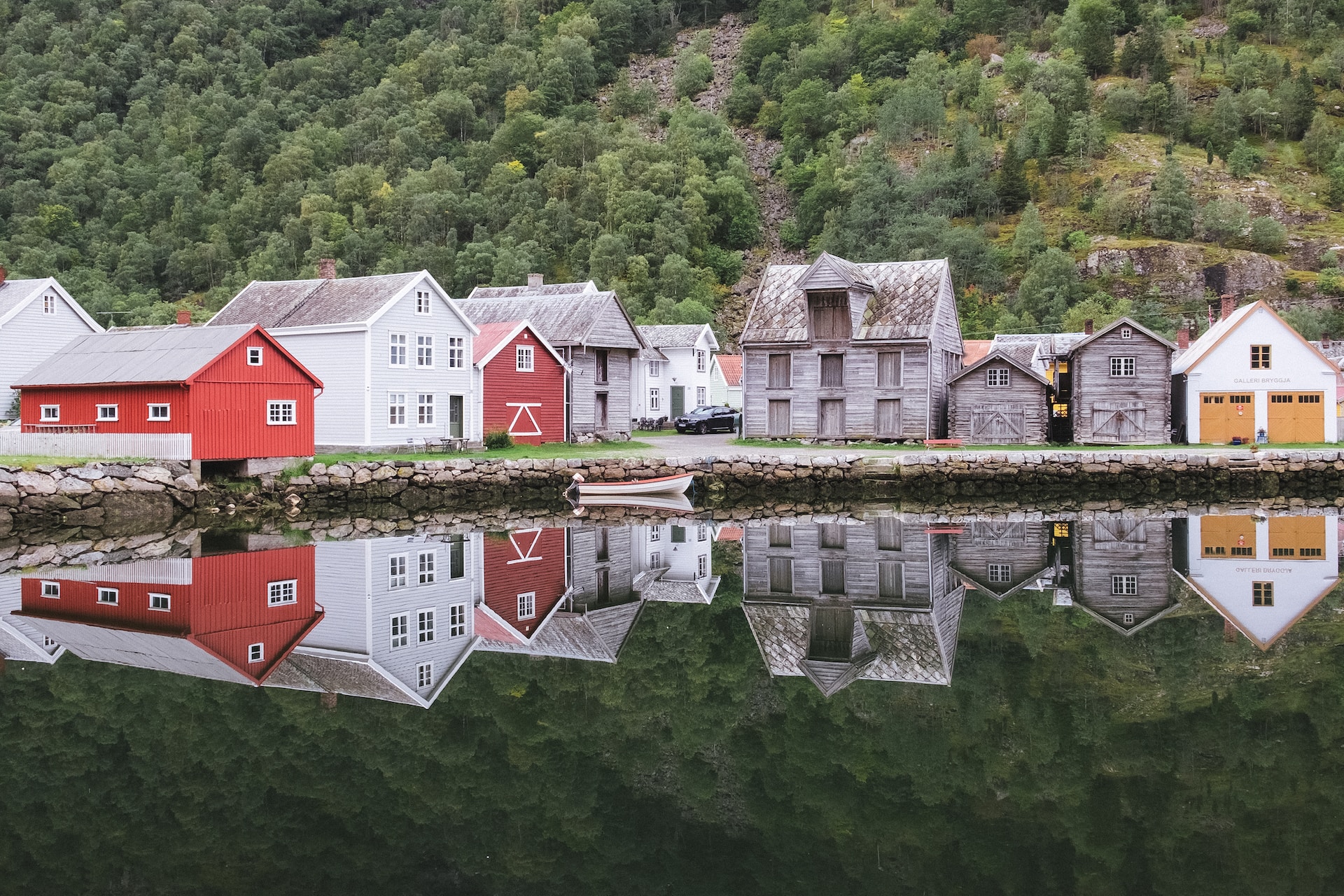Nestled amidst the stunning fjords and picturesque landscapes, Norwegian Cottage Architecture is a testament to the seamless blend of tradition and modernity. The quaint cottages, scattered across the Norwegian countryside, are not merely structures but living narratives that encapsulate the essence of Norway’s cultural heritage. This article unveils the captivating story behind Cottages in Norway, delving into the intricate tapestry of design, construction, and the cultural significance that makes them architectural marvels.
1. A Tapestry of Tradition
Norwegian cottage architecture traces its roots deep into the country’s cultural fabric. The traditional designs reflect a harmonious integration with nature, emphasizing sustainability and functionality. Using locally sourced materials, such as timber and stone, adds a rustic charm and ensures each cottage becomes an organic extension of its surroundings. The intricate carvings and wooden details narrate stories of generations past, preserving a connection to the Norwegian legacy.
2. Innovative Design Principles
The architectural landscape evolves as Norway embraces the present and looks toward the future. Modern design principles have found their way into the traditional cottage aesthetic, giving rise to innovative structures that are both visually striking and technologically advanced. Architects in Norway are experimenting with minimalist designs, large windows to maximize natural light, and sustainable building materials, creating cottages that are not just dwellings but reflections of contemporary thought.
3. Sustainability at the Core
Cottages in Norway are not just about aesthetics; they are pioneers in sustainable living. Integrating eco-friendly technologies, such as solar panels and green roofs, showcases Norway’s commitment to environmental stewardship. These cottages serve as role models for sustainable architecture, promoting a lifestyle that balances modern comforts with a deep respect for nature.
4. Regional Diversity
One cannot discuss Norwegian Cottage Architecture without acknowledging the diverse regional influences. Each region contributes unique elements to the tapestry, from the traditional “Stabbur” of the east to the coastal “Rorbu” cabins of the west. The regional diversity not only adds a layer of complexity to the architectural narrative but also showcases the adaptability of Norwegian design to varied landscapes and climates.
5. The Role of Technology
In the 21st century, technology has become an integral part of architectural innovation. Smart homes, energy-efficient appliances, and advanced construction techniques have made their way into Norwegian cottages without compromising their traditional charm. Technology integration enhances the overall living experience, making these cottages not just dwellings but hubs of modern convenience.
6. Preserving Heritage in the Face of Change
In a rapidly changing world, the challenge lies in preserving the rich heritage embedded in Norwegian Cottage Architecture. As modernity pushes boundaries, architects and conservationists collaborate to strike a delicate balance between innovation and tradition. Efforts to document and restore historic cottages ensure that future generations can continue to marvel at the architectural wonders that define Norway’s countryside.
Conclusion
Norwegian Cottage Architecture is a mesmerising dance between tradition and modernity, where the past meets the future in a seamless embrace. As we traverse the landscapes adorned with these architectural gems, we witness a living legacy that echoes the cultural heartbeat of Norway. Cottages in Norway are not just structures; they are the guardians of a narrative that transcends time, inviting us to appreciate the beauty of harmony in design.



